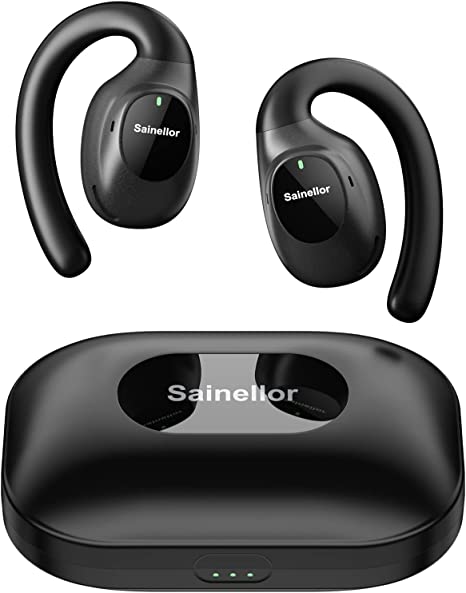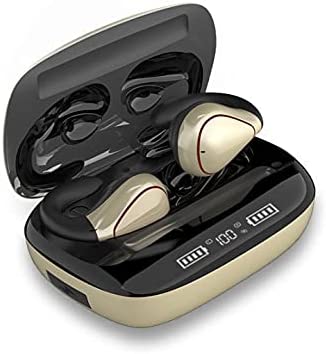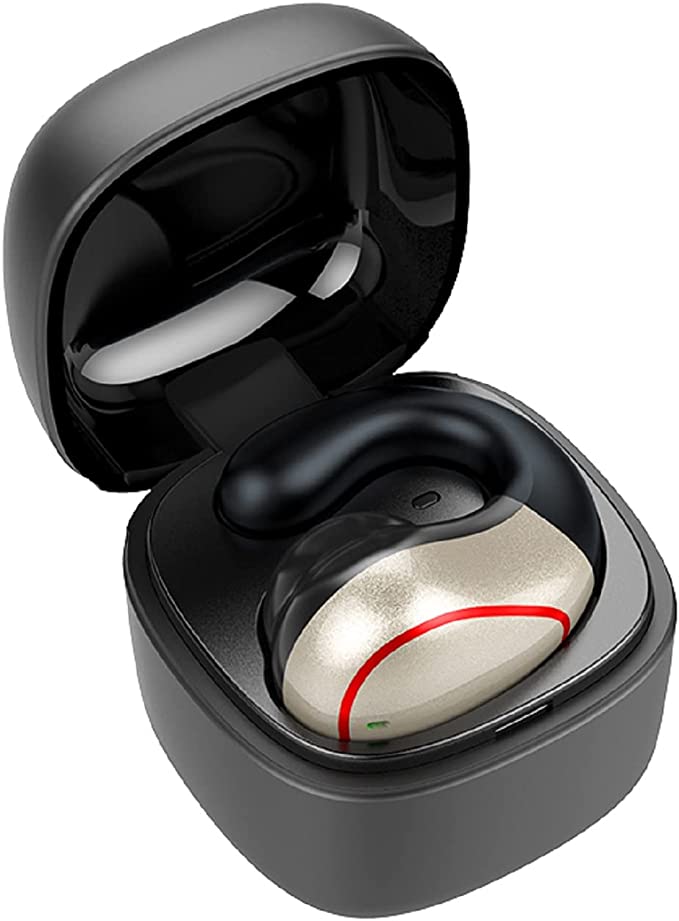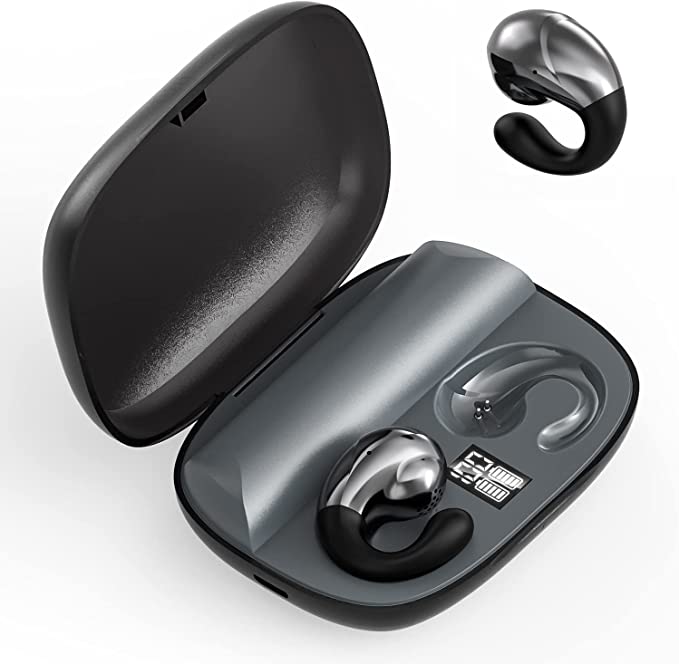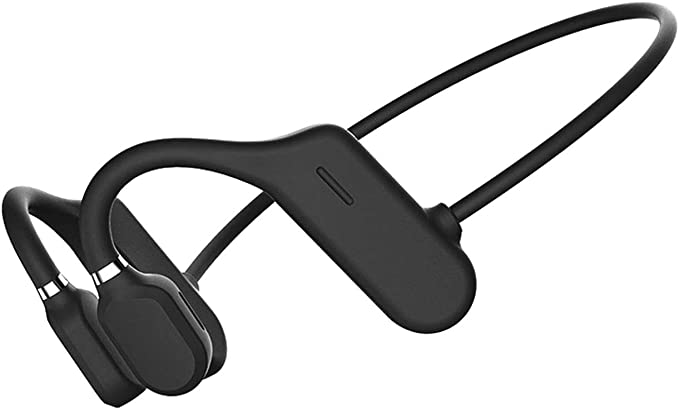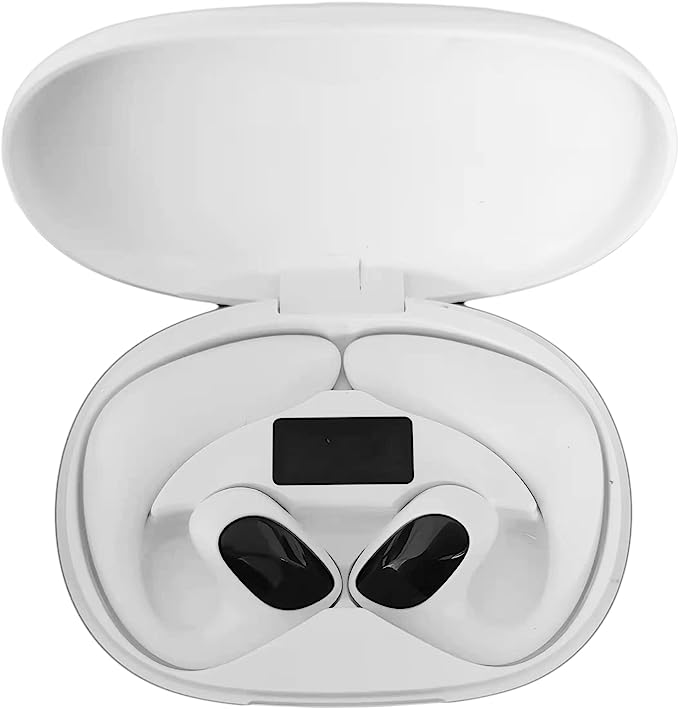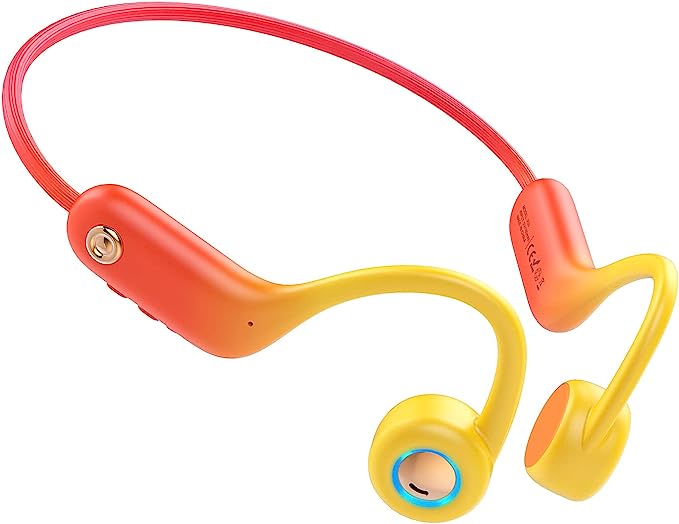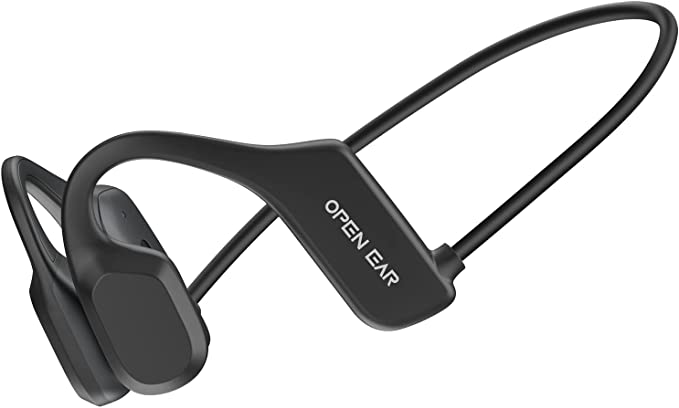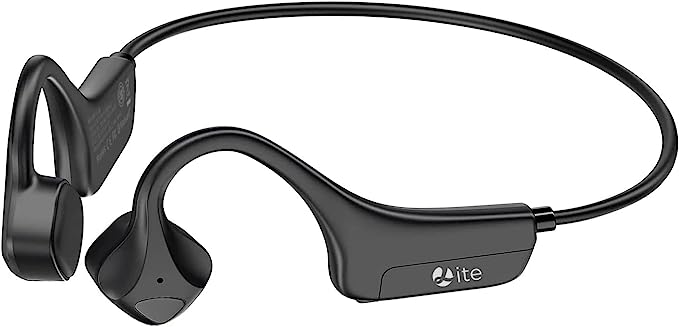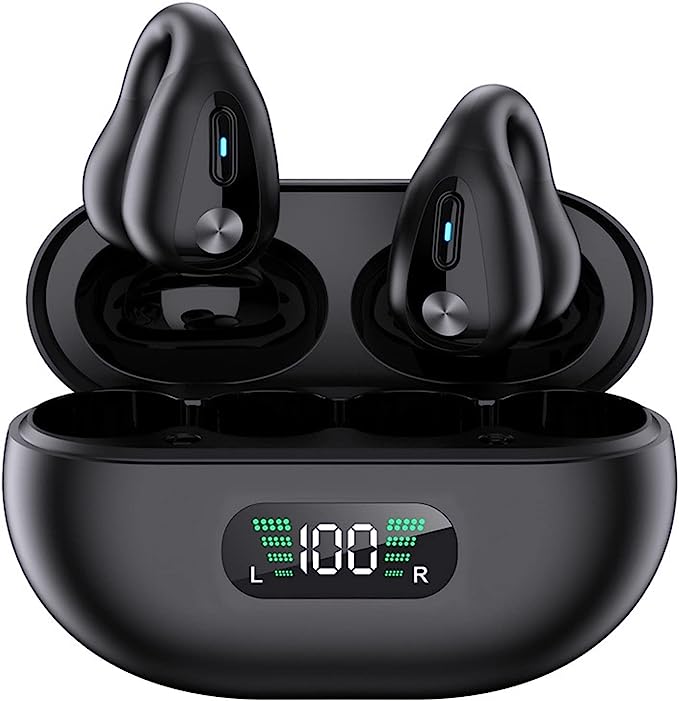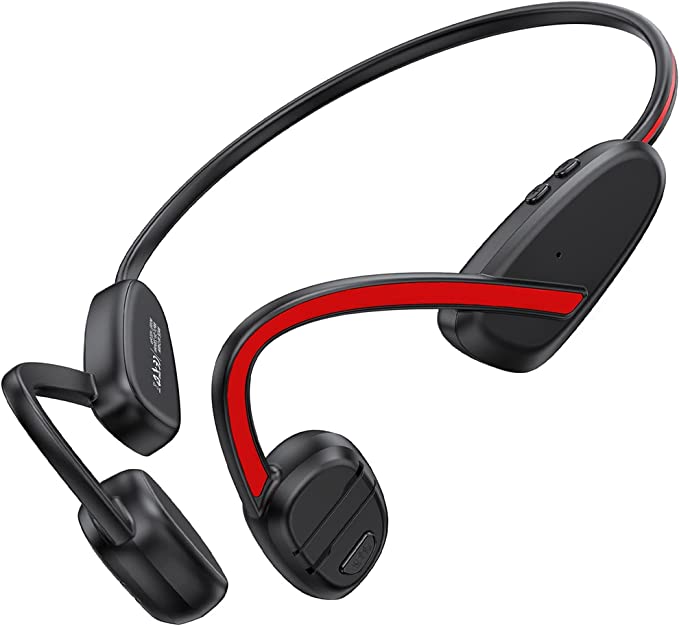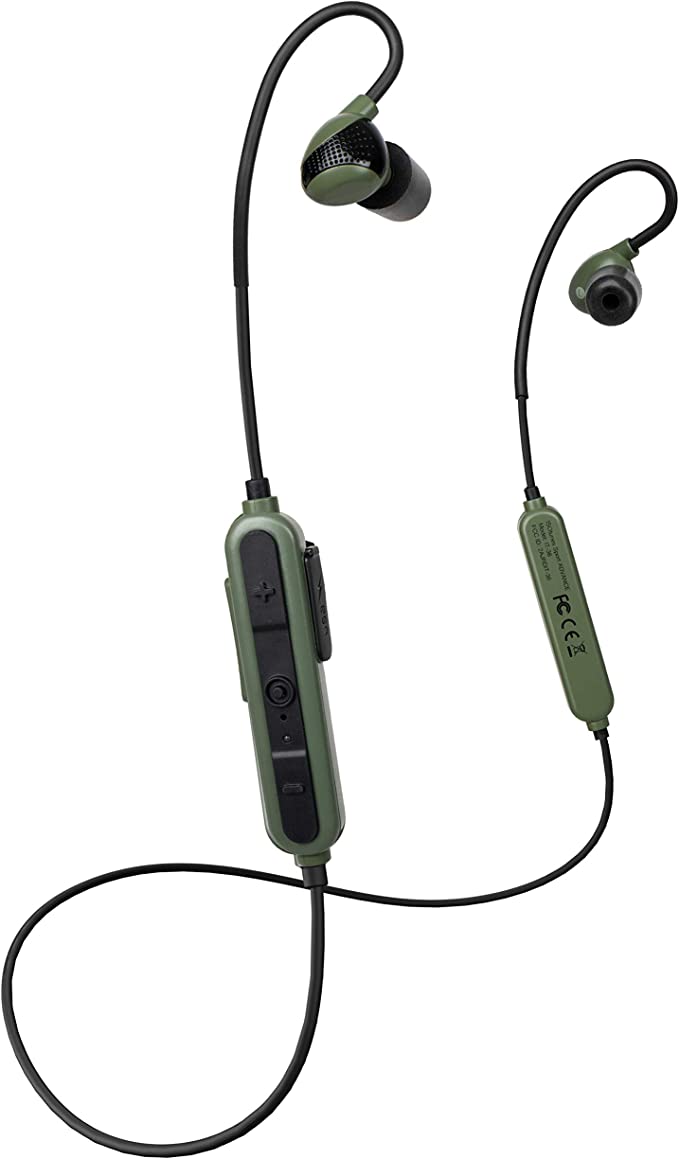GONEJALL A9-520 Open Ear Headphones - Superior Sound Open Wearable Stereo Earphones
Update on June 26, 2025, 6:11 a.m.
We live in an age saturated with sound, often seeking refuge or enhancement in our personal audio bubbles. Yet, the modern listener faces a persistent quest: how to achieve immersive sound and day-long comfort without sacrificing awareness of the world, or indeed, our long-term auditory well-being? Traditional headphones, whether sealing our ear canals or encasing our ears, often demand a trade-off. But a growing field of audio engineering, exemplified by devices like the GONEJALL A9-520 Open Ear Wireless Headphones, offers an elegant alternative by embracing the very air around us as a conduit for sound. This is the science of open-ear listening, a harmonious blend of innovative design and fundamental acoustic principles.

The Architecture of Openness: Air Conduction and Ergonomic Grace
At the heart of the open-ear experience lies a beautifully simple, yet profound, principle: air conduction. This is how we primarily experience the auditory world. Sound waves, which are vibrations traveling through the air, are gathered by the outer ear and funneled towards the tympanic membrane, or eardrum. The eardrum vibrates, setting in motion a delicate chain of tiny bones in the middle ear, which in turn transmit these vibrations to the fluid-filled cochlea of the inner ear. Here, specialized hair cells convert these mechanical vibrations into electrical signals that the brain interprets as sound. The GONEJALL A9-520 headphones are designed to work in concert with this natural pathway. Instead of being inserted into or sealing over the ear canal, they rest gently near it, directing sound waves into the ear much like any other environmental sound.
This deliberate unoccluded design is a cornerstone of their “extremely comfortable” characteristic, a claim underpinned by tangible engineering choices. Each earbud weighs a mere 0.38 ounces (approximately 10.8 grams). This featherlight construction minimizes any sensation of bulk or pressure. The critical point of contact, the earbud’s top connection, is crafted from soft silicone rubber. This material is chosen for its flexibility, durability, and biocompatibility, ensuring it rests gently against the skin without causing irritation, even during extended wear. From a biomechanical perspective, by avoiding the insertion pressure common to in-ear monitors, this open fit significantly reduces the likelihood of ear fatigue and can contribute to better ear hygiene by allowing natural ventilation.
Beyond comfort, this openness bestows the invaluable gift of situational awareness. Because the ear canal remains unobstructed, ambient sounds – the approaching hum of a vehicle, a colleague’s query from across the room, the chirping of birds on a morning run – are perceived naturally and concurrently with the audio from the headphones. This isn’t just a convenience; it’s a critical safety feature for those navigating busy urban environments or engaging in outdoor activities. You remain connected to your surroundings, a part of the acoustic tapestry of your environment, rather than being isolated within it.

Crafting a “Private Concert” in an Unsealed Space: The Nuances of Open-Ear Audio Fidelity
To create a compelling, high-fidelity audio experience without the acoustic seal of traditional headphones is a significant engineering challenge. An enclosed space helps to concentrate sound waves and build bass response. Open designs must achieve this through more sophisticated means. The GONEJALL A9-520 tackles this with a combination of powerful drivers and intelligent acoustic design.
The engine driving the sound is a pair of dual 16.8mm dynamic drivers. In the realm of speaker technology, a dynamic driver consists of a diaphragm (a thin membrane), a voice coil attached to it, and a magnet. When an electrical audio signal passes through the voice coil, it creates a fluctuating magnetic field that interacts with the permanent magnet, causing the voice coil and attached diaphragm to vibrate rapidly. These vibrations create the sound waves we hear. The diameter of the diaphragm – 16.8mm in this case – is crucial. Generally, a larger diaphragm can move a greater volume of air. This increased air displacement is particularly beneficial for reproducing lower frequencies, or bass, with more authority and depth, contributing to the “HIFI stereo sound” and “excitingly powerful lows” described. The product also mentions “top bio-diaphragm technology.” While specifics of “bio-diaphragm” materials vary (often involving cellulose derived from microbial fermentation or other biological sources), such materials are typically chosen for their desirable acoustic properties: high rigidity combined with low internal damping. Rigidity allows the diaphragm to respond quickly and accurately to the audio signal without deforming (leading to clearer highs and transients), while good damping helps to suppress unwanted resonances, resulting in a cleaner, less colored sound across the frequency spectrum. This contributes to a “rich consistent listening experience at any volume.”
However, delivering sound openly also presents the challenge of sound leakage – audio escaping the intended listener’s ears and becoming audible to those nearby. The GONEJALL A9-520 incorporates “upgraded Direction Tone 3.5 technology” to mitigate this. While the precise mechanisms of proprietary technologies are seldom disclosed, such systems likely employ advanced acoustic principles. This could involve precisely angling the drivers to channel sound waves more directly towards the ear canal, or designing the earbud housing to act as a miniature waveguide. It might even subtly use the physics of sound itself, perhaps shaping the wavefront or using carefully tuned ports to minimize errant sound radiation, thus creating that “private concert setting” with greater discretion.

The Unseen Conductor: Seamless Connectivity and Enduring Stamina
The bridge between your audio source and the headphones is the advanced Bluetooth 5.3 chip. Each iteration of the Bluetooth standard brings improvements, and version 5.3 is no exception. It offers enhanced connection stability, meaning fewer frustrating dropouts or stutters in your audio stream. It can also offer more efficient power consumption compared to older versions, contributing to longer battery life. Furthermore, Bluetooth 5.3 includes features that pave the way for LE Audio (Low Energy Audio), a next-generation Bluetooth audio architecture promising further enhancements in quality, latency, and power efficiency, though specific LE Audio feature implementation depends on both the source and headphone chipsets. For the user, this translates to a more reliable, seamless wireless experience.
This robust connectivity supports the “Open Wearable Stereo Tech.” This intelligent feature allows each earbud to function independently for mono playback or calls. If you’re using one and decide to use the other, the system automatically transitions to full stereo mode. This flexibility caters to various listening scenarios, from needing one ear free for conversations to full immersion in music.
Powering these extended listening sessions is a “super large capacity rechargeable case” boasting an 800mAh (milliampere-hour) battery. The earbuds themselves are rated for up to 7 hours of continuous playback on a single charge. When depleted, the case can recharge them multiple times, providing a total usage time of up to 35 hours. This impressive endurance stems from the energy density of modern lithium-polymer batteries and the power-efficient design of the earbuds and their Bluetooth chip. An 800mAh capacity in a charging case of this type provides substantial reserve power, freeing users from the anxiety of daily, or even bi-daily, charging for typical usage patterns.

Engineered for Life’s Cadence: Durability and Practicality
Life is rarely static, and audio devices intended for daily use, especially during sports, need to be resilient. The GONEJALL A9-520 headphones carry an IPX6 waterproof rating. The “IP” stands for Ingress Protection, a standard defined by the International Electrotechnical Commission (IEC 60529). The ‘X’ indicates no specific rating for dust ingress (or it’s not a marketed feature), while the ‘6’ signifies protection against powerful water jets from any direction. This means the earbuds are well-equipped to handle profuse sweating during intense workouts, getting caught in heavy rain, or even an accidental splash from a water bottle. The product description boldly states that “even if the earbuds are fully submerged in water, they can still function normally when you pick them up.” While standard IPX6 does not typically cover full, prolonged submersion (that’s usually IPX7 or IPX8 territory), this claim suggests a very robust sealing and component protection strategy, likely involving precision-engineered casings, internal gaskets, and potentially hydrophobic nano-coatings on sensitive electronics.

For communication, an integrated HD Mic aims to provide clear voice transmission during phone calls. “HD” in this context generally implies a microphone with a wider frequency response for more natural voice capture and often incorporates some form of noise reduction technology. This helps to filter out ambient sounds, allowing your voice to be more clearly understood by the person on the other end, even in moderately noisy environments.

Conclusion: The Harmonious Blend of Personal Audio and Environmental Presence
The GONEJALL A9-520 Open Ear Wireless Headphones serve as a compelling illustration of how thoughtful engineering – from fundamental acoustic principles and material science to advanced wireless communication and power management – can address the modern listener’s multifaceted desires. They represent more than just a convenient way to listen to music; they embody a philosophy of integrated listening. By allowing the personal soundscape to coexist with the ambient symphony of the environment, they offer a path to enjoy rich audio experiences without the compromise of isolation, discomfort, or diminished awareness. As audio technology continues its relentless evolution, designs like these point towards a future where our engagement with sound becomes ever more seamless, intuitive, and harmoniously woven into the fabric of our lives.
